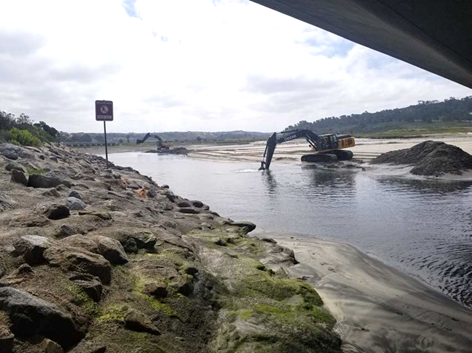NCCOS-supported instruments in Los Peñasquitos Lagoon are providing real-time data to Southern California managers and regulators on key physical parameters (dissolved oxygen, salinity, and water level) enabling them to determine when to intervene and return water flow to the estuary when its mouth is blocked by sand.

Hypoxia (low oxygen) in low-inflow or intermittently-open estuaries is often driven by the state of tidal inlets at the mouth. When the mouth is open to the sea, the estuary is well-flushed with oxygen. However, when the mouth is blocked by wave-driven accumulation of sediment, oxygen levels can become dangerously low and cause aquatic organisms to suffocate. While low-inflow estuaries in Southern California have historically opened and closed on their own, the heavy urbanization of the landscape now requires humans to intervene to reopen and restore flow and oxygen to estuaries.
By providing real-time data, the Los Peñasquitos Lagoon Foundation is able to pinpoint the best time to reopen the estuary mouth and report this to regulators at the California Coastal Commission and San Diego Regional Water Quality Control Board. Mouth management is one of the primary tools used to restore tidal circulation and alleviate hypoxia. The timing of mechanical mouth opening, which involves the costly removal of accumulated sediment, is critical. Managers must balance the oxygen levels with the risk of having the mouth reclose, if it is opened too soon, and doubling the cost of mouth maintenance.
The overall project led by Scripps Institution of Oceanography at the University of California, San Diego in collaboration with the Tijuana River National Estuarine Research Reserve, is investigating the processes that lead to hypoxia in Southern California’s lagoons and identifying its ecological impacts to help inform effective management of these estuaries.
